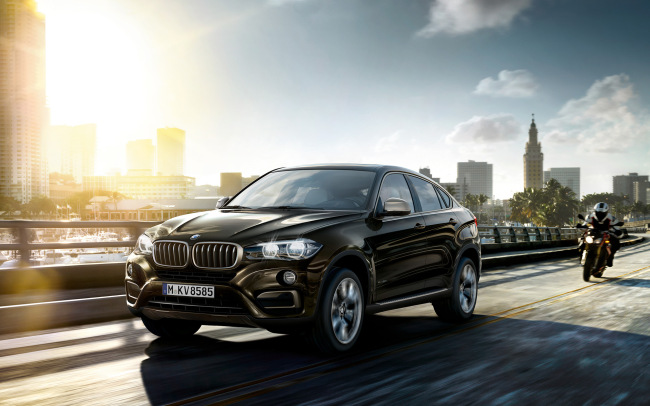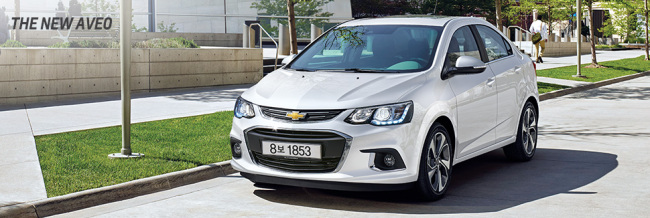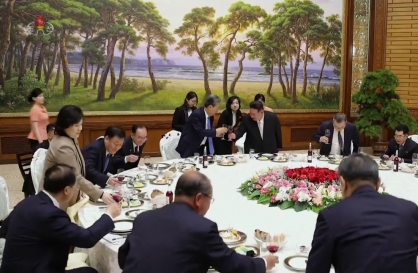[News Analysis] Why SUVs are hot, while sedans are not
Changing lifestyle, widened features and automakers‘ supply strategy boost popularity
By Kim Da-solPublished : April 9, 2019 - 15:43
From Land Rover’s Range Rover to Hyundai Motor’s Palisade, sport utility vehicles dominate the streets of Seoul, like many other metropolitan cities nowadays.
Rugged off-roaders are no longer limited to muddy tracks, steep hills or deep rivers. In fact, this all-terrain ability of SUVs has attracted drivers who prefer a comfortable and satisfying driving experience. The wide range of models -- from large vehicles and pickup trucks to compact crossovers -- gives customers a variety of choices in style and size.
The global trend of shifting away from sedans and hatchbacks toward SUVs has translated into increased attention in South Korea as well.
The Korea Automobile Manufacturers Association data shows that SUV sales of the five major domestic carmakers stood at 603,066 units in 2018, rising from 544,906 in 2017 and 542,017 in 2016. In 2012, SUV sales were around 256,923 units.
Meanwhile, sedans sold 694,868 units last year, making up 49.7 percent of the total car sales. For the first time, their share has fallen below 50 percent in a country where luxurious, coupe-style sedans were once the object of envy.
Sonata, the best-selling car in Korea until 2015, has fallen to seventh place with sales of 65,846 units last year. The situation is similar for other popular sedans, such as Toyota Camry that saw its global sales plummet 11 percent last year compared to 2017.
SUV’s spacious charm
So, why are SUVs selling more than sedans?
Primarily, according to carmakers, this has much to do with the increase in the number of people enjoying outdoor leisure activities such as camping as they prefer a roomier interior and cargo area.
Cars with a more spacious interior are preferred by the younger generation given their “You only live once” (YOLO) lifestyle seeking more adventures in their free time.
Finding a work-life balance has also shifted Koreans’ interest to spending more time doing outdoor activities. Keeping equipment such as tents, mats or sports gear like ski in the car trunk have become more important than before, said an official from a local carmaker.
“While a family car in the past was defined by a four-seat sedan, the definition has changed to a car that can carry the entire family and their stuff for a getaway in an instant,” said a Hyundai official.
Professor Lee Ho-geun from Daeduk University, meanwhile, observed the actual increase in the number of car owners.
As per latest data the number of registered vehicles in Korea, with a population of around 52 million, is over 25 million.
There are more individuals who drive their own cars now. Earlier, a single vehicle was responsible for transporting a larger number of people. This means that while the comfort of the rear seat was more important in the past, the convenience of the driver’s seat has become more important now, Lee said.
“More customers now focus on better driving visibility and options in the driver’s seat. SUVs offer better satisfaction compared to sedans in this regard,” he noted.
SUV goes sedan-like
Larger space, better visibility due to higher driving position and the option of an all-wheel drive are the obvious strengths of SUVs.
But many see the almost sedan-like ride comfort and diversified segment lineups of SUVs as another driver of the boom.
“Companies have been transforming SUVs to be more compact in size and suitable for a city lifestyle to attract urban drivers. With technological development, SUVs also have enhanced safety features and engines to match the comfort of a sedan,” a BMW Korea official told The Korea Herald.
With lines between an SUV and sedan blurring, the former has become diversified. BMW launched a new segment called Sport Activity Coupe, while Volvo did with the V90 Cross Country Wagon. Options for customization of interior features and safety functions are available as well.
Rugged off-roaders are no longer limited to muddy tracks, steep hills or deep rivers. In fact, this all-terrain ability of SUVs has attracted drivers who prefer a comfortable and satisfying driving experience. The wide range of models -- from large vehicles and pickup trucks to compact crossovers -- gives customers a variety of choices in style and size.
The global trend of shifting away from sedans and hatchbacks toward SUVs has translated into increased attention in South Korea as well.
The Korea Automobile Manufacturers Association data shows that SUV sales of the five major domestic carmakers stood at 603,066 units in 2018, rising from 544,906 in 2017 and 542,017 in 2016. In 2012, SUV sales were around 256,923 units.
Meanwhile, sedans sold 694,868 units last year, making up 49.7 percent of the total car sales. For the first time, their share has fallen below 50 percent in a country where luxurious, coupe-style sedans were once the object of envy.
Sonata, the best-selling car in Korea until 2015, has fallen to seventh place with sales of 65,846 units last year. The situation is similar for other popular sedans, such as Toyota Camry that saw its global sales plummet 11 percent last year compared to 2017.
SUV’s spacious charm
So, why are SUVs selling more than sedans?
Primarily, according to carmakers, this has much to do with the increase in the number of people enjoying outdoor leisure activities such as camping as they prefer a roomier interior and cargo area.
Cars with a more spacious interior are preferred by the younger generation given their “You only live once” (YOLO) lifestyle seeking more adventures in their free time.
Finding a work-life balance has also shifted Koreans’ interest to spending more time doing outdoor activities. Keeping equipment such as tents, mats or sports gear like ski in the car trunk have become more important than before, said an official from a local carmaker.
“While a family car in the past was defined by a four-seat sedan, the definition has changed to a car that can carry the entire family and their stuff for a getaway in an instant,” said a Hyundai official.
Professor Lee Ho-geun from Daeduk University, meanwhile, observed the actual increase in the number of car owners.
As per latest data the number of registered vehicles in Korea, with a population of around 52 million, is over 25 million.
There are more individuals who drive their own cars now. Earlier, a single vehicle was responsible for transporting a larger number of people. This means that while the comfort of the rear seat was more important in the past, the convenience of the driver’s seat has become more important now, Lee said.
“More customers now focus on better driving visibility and options in the driver’s seat. SUVs offer better satisfaction compared to sedans in this regard,” he noted.
SUV goes sedan-like
Larger space, better visibility due to higher driving position and the option of an all-wheel drive are the obvious strengths of SUVs.
But many see the almost sedan-like ride comfort and diversified segment lineups of SUVs as another driver of the boom.
“Companies have been transforming SUVs to be more compact in size and suitable for a city lifestyle to attract urban drivers. With technological development, SUVs also have enhanced safety features and engines to match the comfort of a sedan,” a BMW Korea official told The Korea Herald.
With lines between an SUV and sedan blurring, the former has become diversified. BMW launched a new segment called Sport Activity Coupe, while Volvo did with the V90 Cross Country Wagon. Options for customization of interior features and safety functions are available as well.

Besides the smooth-riding comfort and lightweight car frames of new SUV models, many of them even get mileage similar to sedans.
Some of the latest SUVs powered by technologically innovated GDI engines or hybrid powertrains also offer the same feel of explosive accelerating forces offered by the previous models.
“Mercedes-Benz’s SUV models proved that the fuel efficiency of SUVs can improve to a level not much different from average sedans. Customers can also choose a fuel-efficient hybrid trim, really washing away their concerns on mileage,” said a Mercedes-Benz Korea official.
Carmakers capitalize on profit-rich SUVs
Some market insiders, meanwhile, also suggest that the increased SUV sales simply come from increased supply. SUVs, which are larger and cost more to manufacture, offer more profits to automakers.
According to US automaker Ford, its compact SUV Eco Sports costs $20,000 in the US. With added features for the higher trim, the price can go up by 1.5 times. This equals to at least $4,500 increased profit compared to when selling a sedan Fiesta and $2,500 profit by selling a hatchback Focus.
In case of SsangYong Motor’s compact SUV Tivoli, the standard model is the cheapest at around 16.2 million won ($14,178), but the price can almost double for the highest trim.
With automakers capitalizing on popular, profitable SUV models, some major carmakers are ditching sedans to invest more in SUVs.
GM Korea, the local unit of General Motors, has decided to discontinue Chevrolet’s subcompact car Aveo for business portfolio concentration, nine years after its launch here.

“It is a natural step for automakers to bet big on a popular vehicle lineup, so they can secure funds for future vehicle development such as electric vehicles and self-driving cars -- especially at a time when more of them are striving to find solutions to reducing emissions (from their cars) linked to climate change,” said Lee from Daeduk University.
Will carmakers ‘give up’ on sedans?
With SUVs overtaking sedan sales, some automakers are exiting the sedan market to introduce new SUV models. But it does not mean the companies are giving up on sedans entirely, industry insiders say.
“Car companies are focusing on boosting profit-rich large SUV production, but (sedans and SUVs) cannot replace each other. Each has a distinctive characteristic not only in terms of design and frame, but also geometric features such as height and length, as well as use of passenger and cargo space,” an official from a local carmaker’s design studio told The Korea Herald.
He also added that although SUVs now offer almost sedan-like silence and ride comfort, it will be difficult to have exactly the same features, as engines are located differently inside the car’s hood.
Also, companies see sedans as a good way to hook customers with updated features in the face-lift models at a reasonable and affordable price.
“In terms of product strategy, sedans play a powerful role in terms of brand awareness. Except for some renowned SUV brands such as SsangYong or Jeep, most carmakers’ sales are directly linked to their main sedan lineups,” said Park Jae-yong from Korea Automotive Future Research Center.
Increased SUV sales do not indicate the falling significance of sedans, as the full-size sedan is a segment that can best represents the luxurious image of an automaker, some say.
“A reasonable price, sporty-looking A-spec sedan is bringing in buyers from early 20s to late 60s. Carmakers will want to keep that momentum going with steady-selling entry-level products such as Hyundai’s Sonata,” he said.
By Kim Da-sol (ddd@heraldcorp.com)




















